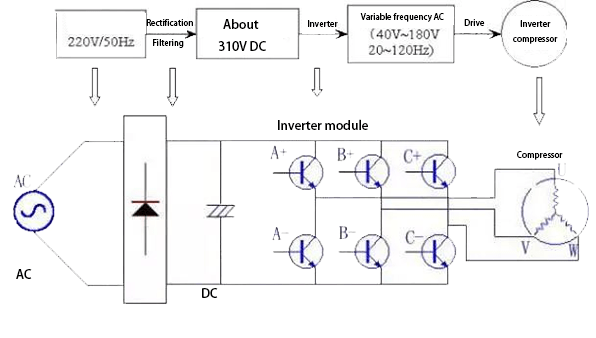
Figure 1: Inverter AC outdoor unit circuit board.
Air conditioning is an essential part of modern life, especially in hot and humid climates. However, traditional air conditioners can be very inefficient, consuming a lot of energy and driving up electricity bills.
Inverter air conditioners (inverter ACs) are a more efficient and cost-effective solution to keep your home cool and comfortable. In this article, we will explore what an inverter air conditioner is and how it works.
What is an Inverter AC?
An inverter air conditioner is a type of air conditioner that uses a variable frequency drive (VFD) module to control the speed of the compressor motor. Unlike traditional air conditioners (fixed speed air conditioners) that turn their compressors on and off to maintain the desired temperature, inverter air conditioners can adjust the speed of the inverter AC compressor motor to match the cooling demand of the room. This means that inverter air conditioners consume less energy and can maintain a more consistent temperature.

Figure 2: Inverter technology used in AC.
How Does an Inverter AC Work?
Inverter air conditioners work by using a combination of advanced electronics, sensors, and a variable speed compressor to maintain a consistent indoor temperature while using less energy. Here is a step-by-step breakdown of how an inverter air conditioner works:
1.The thermostat senses the indoor temperature and sends a signal to the control board.
2.The control board analyzes the temperature data and determines the cooling demand of the room.
3.The control board sends a signal to the inverter AC compressor motor to adjust its speed to match the cooling demand. The compressor motor can operate at different speeds, from low to high, depending on the cooling demand of the room.
4.The inverter air conditioner's refrigerant flow rate is also adjusted based on the cooling demand to ensure that the system operates at peak efficiency.
5.The air handler circulates the cooled air through the room, and the thermostat continues to monitor the temperature to maintain the desired temperature.

Figure 3: Inverter AC compressor control diagram.
Pros of Inverter AC
Inverter air conditioners offer several benefits over traditional air conditioners, including:
Energy efficiency: Inverter air conditioners can operate at partial load, reducing energy consumption and saving you money on your electricity bill.
Consistent temperature: Inverter air conditioners can maintain a more consistent indoor temperature, providing greater comfort and reducing temperature fluctuations.
Quieter operation: Inverter air conditioners operate at lower speeds, producing less noise than traditional air conditioners.
Longer lifespan: Inverter air conditioners have fewer mechanical components and operate at lower speeds, reducing wear and tear on the system and increasing its lifespan.
Environmentally friendly: Inverter air conditioners consume less energy, reducing greenhouse gas emissions and helping to protect the environment.

Figure 4: Circuit schematic diagram of AC inverter air conditioner.
Cons of Inverter AC
While inverter air conditioners offer many benefits, they do have some drawbacks, including:
Higher upfront cost: Inverter air conditioners are typically more expensive than traditional air conditioners, which can be a barrier for some consumers.
Complex technology: Inverter air conditioners use advanced electronics and sensors, which can make them more complicated to repair and maintain.
Compatibility: Inverter air conditioners may not be compatible with older homes or buildings that have outdated electrical systems.
Not suitable for extreme temperatures: Inverter air conditioners may not be as effective in extreme temperatures, such as very hot or very cold weather.
Repair costs: Inverter air conditioners can be more expensive to repair than traditional air conditioners due to the complexity of the technology.

Figure 5: Circuit schematic diagram of DC inverter air conditioner.
Maintenance of Inverter AC
Like any other air conditioning system, inverter air conditioners require regular maintenance to ensure they operate at peak efficiency and to prevent breakdowns. Here are some maintenance tips for inverter air conditioners:
1.Clean or replace air filters regularly to ensure proper airflow and prevent the buildup of dirt and debris.
2.Check the outdoor unit regularly to ensure that it is clear of debris and that the fins are not bent or damaged.
3.Schedule annual maintenance with a professional HVAC technician to clean and inspect the system, check refrigerant levels, and ensure that the system is operating correctly.
4.Keep the area around the indoor and outdoor units clear of obstructions to ensure proper airflow.
5.Monitor the system for any unusual noises, odors, or performance issues and contact a professional HVAC technician if you notice any problems.

Figure 6: Air conditioner inverter drive and control modules.
Conclusion
Inverter air conditioners are a more efficient and cost-effective solution to keep your home cool and comfortable. They use advanced electronics and sensors to adjust the inverter AC compressor motor's speed and refrigerant flow rate to match the cooling demand of the room, reducing energy consumption and providing greater comfort.
While inverter ACs may have a higher upfront cost and require more complex technology, they offer many benefits over traditional air conditioners, including energy efficiency, consistent temperature, quieter operation, longer lifespan, and environmental friendliness. With proper maintenance and care, inverter ACs can provide reliable and efficient cooling for many years.
Related Info
DIY GE Refrigerator Troubleshooting Tips to Save Time and MoneyWhich Compressor is Used in Commercial Refrigerator?
How to Tell if LG Refrigerator Compressor is Bad: Symptoms, Problems, and Solutions
Why is My Fridge Not Cooling & How to Fix
DIY Guide to Testing and Replacing Your Refrigerator Compressor Start Relay (Save Money and Time)


